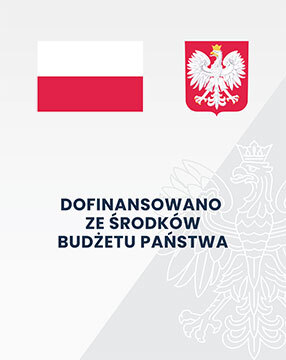Badanie użyteczności serwisów internetowych oparte na eye-trackingu. Studium przypadku witryny internetowej Litewskiego Muzeum Narodowego
Andruis Šuminas
Afiliacja: Media Research Lab, Vilnius University, Litwa
Arūnas Gudinavičius
Afiliacja: Media Research Lab, Vilnius University, Litwa
Abstrakt
CEL/TEZA: Celem artykułu jest analiza użyteczności serwisu internetowego Litewskiego Muzeum Narodowego-Zamek Dolny w Wilnie z wykorzystaniem techniki Eye Tracking. Badania przeprowadzono z punktu widzenia procesów wyszukiwania informacji realizowanych przez użytkowników serwisu. KONCEPCJA/METODY BADAŃ: Do opracowania stanu wiedzy na temat metod oceny użyteczności oraz historycznego ujęcia badań percepcją wzrokową wykorzystano metodę analizy i krytyki piśmiennictwa. Kwestionariusz ankiety był narzędziem zbierania danych na temat potrzeb informacyjnych odwiedzających muzeum oraz stosowanych przez nich schematów wyszukiwania informacji. Technikę Eye Tracking wykorzystano do oceny serwisu internetowego Litewskiego Muzeum Narodowego Zamek Dolny w Wilnie.
WYNIKI I WNIOSKI: Technika Eye Tracking cieszy się zainteresowaniem w wielu obszarach badawczych, jednak w kontekście projektowania serwisów informacyjnych muzeów oraz oceny ich użyteczności nie poświęcono jej wiele uwagi w piśmiennictwie naukowym. Wyniki badań nad potrzebami informacyjnymi użytkowników serwisów informacyjnych muzeów litewskich wskazują, że do najbardziej poszukiwanych treści należą: godziny otwarcia, lokalizacja muzeum, ceny biletów oraz informacje o ekspozycjach. Uzyskane wyniki potwierdzają tezę, że użytkownicy serwisów internetowych muzeów wykorzystują je jako narzędzie do przygotowywania się do wizyty w ich fizycznej lokalizacji. Wykorzystanie techniki Eye Tracking do analizy interakcji użytkowników z serwisem internetowym Muzeum Narodowego-Zamek Dolny w Wilnie pokazało typowe błędy projektantów związane z rozmieszczeniem informacji. Jeśli pożądane przez użytkowników informacje zostaną rozmieszczone w serwisie w różnych miejscach i poziomach dostępności, to zwiększa się czas i potrzebny wysiłek do ich lokalizacji.
ORYGINALNOŚĆ/WARTOŚĆ POZNAWCZA: Zagadnienia projektowania serwisów internetowych muzeów nie są często podejmowanym problemem badawczym w światowej literaturze naukowej. Brakuje również danych badawczych na temat wykorzystania techniki Eye Tracking w ocenie użyteczności serwisów internetowych muzeów na Litwie, Wyniki badań mogą być wykorzystane do projektowania efektywnych interfejsów użytkownika w serwisach internetowych muzeów. W szerszym kontekście wyniki badań mogą mieć zastosowanie w optymalizacji interfejsów i reprezentacji informacji w serwisach internetowych.
Słowa kluczowe
Badanie użyteczności serwisów internetowych; Eye Tracking; Serwisy internetowe muzeów; Potrzeby informacyjne
Bibliografia
Benel, D.C.; Ottens, D.; Horst, R. (1991). Use of an eye tracking system in the usability laboratory. Proceedings of the Human Factors Society 35th Annual Meeting, 461–465.
Cooley, R. (2003). The use of Web Structures and Content to Identify Subjectively Interesting Web Usage Patterns. ACM TOIT, 3(2), 93–116.
Dong, Y.; Lee, K. (2008). A cross-cultural comparative study of users’ perceptions of a webpage: with a focus on the cognitive styles of Chinese, Koreans and Americans. International Journal of Design, 2(2), 19–30.
Duchowski, A. T. (2007). Eye Tracking Methodology: Theory and Practice. Secaucus, NJ, USA: Springer- Verlag New York, Inc.
Ellis, S.; Candrea, R.; Misner, J.; Craig, C.S.; Lankford, C.P.; Hutshinson, T.E. (1998). Windows to the soul? What eye movements tell us about software usability. Proceedings of the Usability Professionals’ Association Conference 1998, 151–178.
Fitts, P.M.; Jones, R.E.; Milton, J.L. (1950). Eye movements of aircraft pilots during instrument-landing approaches. Aeronautical Engineering Review, 9(2), 24–29.
Gibson, E.J. (1941). Retroactive inhibition as a function of degree of generalization between tasks. Journal of Experimental Psychology, 28(2), 93–115.
Heijden, A. H. C., van der (1991). Selective attention in vision. London: Routledge.
Helmholtz, H., von (1925). Treatise on Physiological Optics. New York: Optical Society of America.
Huey, E. B. (1908). The Psychology and Pedagogy of Reading. New York: The MacMillan Company.
Hutchinson, T.E.; White, K.P.; Martin, W.N.; Reichert, K.C.; Frey, L.A. (1989). Human–computer interaction using eye-gaze input. IEEE Transactions on Systems, Man, and Cybernetics, 19, 1527–1534.
ISO. (1998). ISO 9241: Ergonomics Requirements for Office Work with Visual Display Terminal (VDT) — Part 11: Guidance on usability.
Jacob, R.; Karn, K.S. (2003). Commentary on Section 4 – Eye Tracking in Human-Computer Interaction and Usability Research: Ready to Deliver the Promises. In: J.
H. R. Deubel (ed.), The Mind’s Eye. Amsterdam: North-Holland, 573–605.
Just, M.A.; Carpenter, P.A. (1976). Eye fixations and cognitive processes. Cognitive Psychology, 8(4), 441–480.
Karoulis, A.; Sylaiou, S.; White, M. (2006). Usability Evaluation of a Virtual Museum Interface. INFORMATICA, 17(3), 1–17.
Kravchyna, V.; Hastings, S.K. (2002). Informational Value of Museum Web Sites. First Monday [online], 7(2), [29.09.2014], http://journals.uic.edu/ojs/index.php/fm/article/view/929/851
Leuthold, S.; Schmutz, P.; Bargas-Avila, J.A.; Tuch, A.N.; Opwis, K. (2011). Vertical versus dynamic menus on the world wide web: Eye tracking study measuring the influence of menu design and task complexity on user performance and subjective preference. Computers in Human Behavior, 27(1), 459–472.
Levine, J.L. (1984). Performance of an eyetracker for office use. Computational Biology and Medicine, 14, 77–89.
Martin, C.; Cegarra, J.; Averty, P. (2011). Analysis of Mental Workload during En-route Air Traffic Control Task Execution Based on Eye-Tracking Technique. In: D. Harris (ed.), Springer Berlin Heidelberg, 592–597.
Marty, P.; Twidale, M. (2004). Lost in gallery space: A conceptual framework for analyzing the usability flaws of museum Web sites. First Monday, [online], 9(9), [29.09.2014], http://firstmonday.org/ojs/ index.php/fm/article/view/1171/1091
Matera, M.; Rizzo, F.; Carughi, G. (2006). Web Usability: Principles and Evaluation Methods. In: E. Mendes & N. Mosley (eds.), Springer Berlin Heidelberg, 143–180.
Moos, T.; Brændholdt Lundgaard, I. (2010). The Museum’s Web Users – A User Survey of the Museums’ Websites. Heritage Agency of Denmark, [online], [29.09.2014], http://www.kulturstyrelsen. dk/fileadmin/publikationer/publikationer_engelske/Reports/The_museum_s_web_users_2010.pdf
Nielsen, J.; Mack, R. L. (1994). Usability Inspection Methods. New York: Wiley.
Nielsen, J. (1993). Usability Engineering. Cambridge, MA: Academic Press.
Nielsen, J. (2006). F-shaped pattern for reading web content [online]. Nielsen Norman Group, [29.06.2015], http://www.nngroup.com/articles/f-shaped-pattern-reading-web-content/
Nielsen, J. (2012). Usability 101: Introduction to Usability [online]. Nielsen Norman Group, [29.06.2015], http://www.nngroup.com/articles/usability-101-introduction-to-usability/
Nielsen, J.; Pernice, K. (2009). Eyetracking Web Usability (1st ed.). Thousand Oaks, CA, USA: New Riders Publishing.
Pallud, J.; Straub, D.W. (2014). Effective website design for experience-influenced environments: The case of high culture museums. Information & Management, 51(3), 359–373.
Polson, P.; Lewis, C.; Rieman, J.; Wharton, C. (1992). Cognitive Walkthrough: A Method for Theory- -based Evaluation of User Interfaces. International Journal of Man-Machine Studies, 36, 741–773.
Rahim, N.; Wook, T.S.M.T.; Zin, N.A.M. (2011). Developing Conceptual Model of Virtual Museum Environment Based on User Interaction Issues. Visual Informatics: Sustaining Research and Innovations, Pt Ii, 7067, 253–260.
Schmutz, P.; Roth, S.P.; Seckler, M.; Opwis, K. (2010). Designing product listing pages—Effects on sales and users’ cognitive workload. International Journal of Human-Computer Studies, 68(7), 423–431.
Senders, J.W. (2000). Four theoretical and practical questions. Keynote address presented at the Eye Tracking Research and Applications Symposium. Proceedings of the Eye Tracking Research and Applications Symposium 2000, 8.
Skov, M.; Ingwersen, P. (2014). Museum Web search behavior of special interest visitors. Library & Information Science Research, 36(2), 91–98.
Sylaiou, S.; Mania, K.; Karoulis, A.; White, M. (2010). Exploring the relationship between presence and enjoyment in a virtual museum. International Journal of Human-Computer Studies, 68(5), 243–253.
Wang, Q.; Yang, S.; Liu, M.; Cao, Z.; Ma, Q. (2014). An eye-tracking study of website complexity from cognitive load perspective. Decision Support Systems, 62, 1–10.
Wharton, C.; Rieman, J.; Lewis, C., et al.Polson, P. (1994). The Cognitive Walkthrough Method: A Practitioner’s Guide. In: J. Nielsen & R. L. Mack (eds.), Usability Inspection Methods. New York: Wiley, 105–140.
Yang, G. (2009). A Study on the User-Centered Interface Design for Virtual Museums. 10th IEEE International Conference on Computer-Aided Industrial Design and Conceptual Design, 1647–1651.
Yarbus, A. L. (1967). Eye Movements and Vision. New York: Plenum.
Afiliacja: Media Research Lab, Vilnius University, Litwa
Biogram:
Dr Andrius Šuminas is Head of Media Research Lab at the Faculty of Communication, Vilnius University. He holds a PhD in Information and Communication Sciences. He is a scientific editor of the peer-reviewed
scientific journal Parliamentary Studies. His main areas of research are web usability, interactive networking, business communication in social media, political communication, media transformation.
Contact to the authors:
andrius.suminas@kf.vu.lt
Medijų tyrimų laboratorija, Komunikacijos fakultetas, Vilniaus Universitetas
Saulėtekio al. 9, I rūmai
10222 Vilnius, Lithuania
Afiliacja: Media Research Lab, Vilnius University, Litwa
Biogram:
Dr Arūnas Gudinavičius is currently a lecturer and researcher at the Institute of Book Science and Documentation at Faculty of Communication, Vilnius University. Since 1999 he has been working in one of Lithuania’s leading digital publishing houses. In 2012 he completed his PhD in Information and Communication Sciences. His research interests are human-computer interaction, digital books and digital publishing.
CC BY-NC-ND 4.0 Uznanie autorstwa - Użycie niekomercyjne - Bez utworów zależnych 4.0 Międzynarodowe





